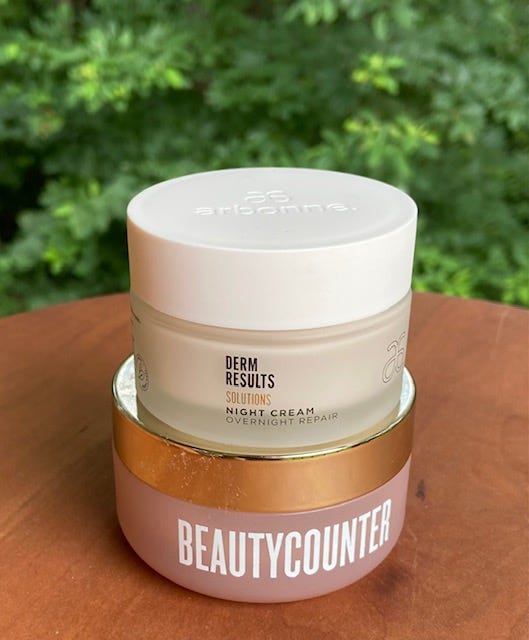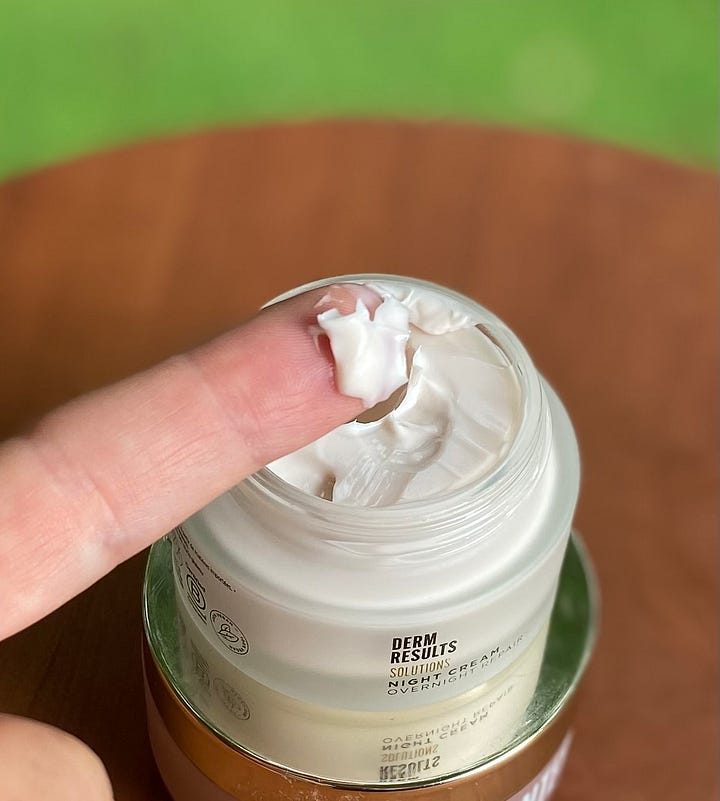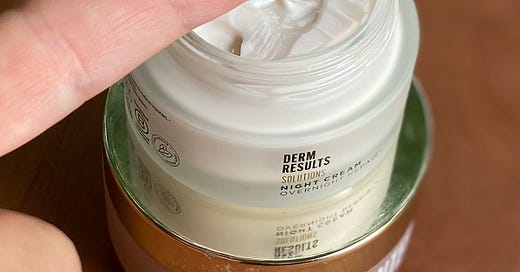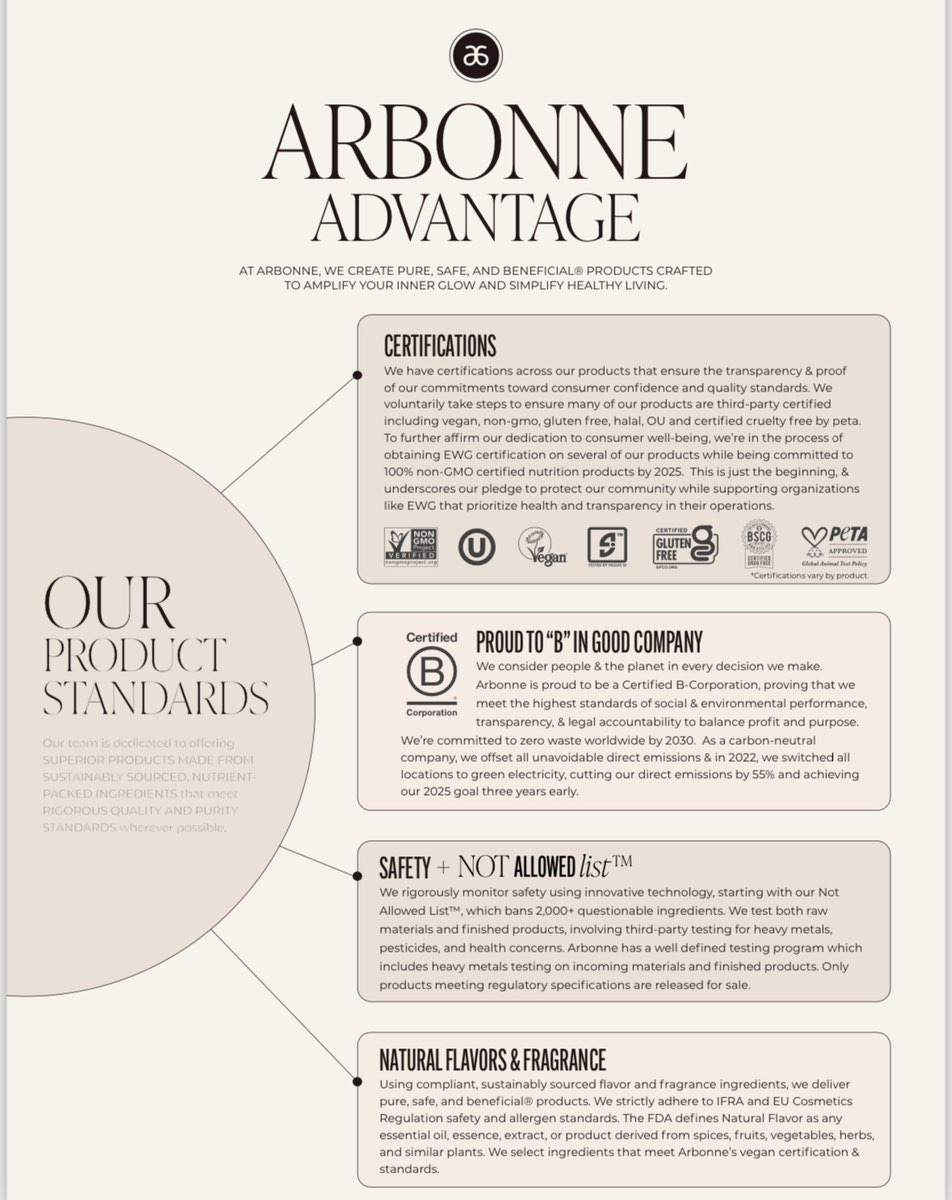Moisturizer sits on the largest organ, the skin, for twelve or more hours - until you wash or it rubs off. If you’re not careful with ingredients it often has hormone disrupting ingredients. Particularly, inexpensive products most certainly have hormone disruptors.
Almost 5 years ago my teenage son was swimming competitively, drying out his skin. He started using my “expensive” moisturizer. I traded him a leftover bottle of drug store face lotion. Then I started learning about hormone disruptors. He entered puberty and I couldn’t with good conscience let him slather himself with chemicals I knew were causing harm.
«please oh please keep your teenagers out of Bath & Body Works smelly stores.»
Once my eyes were opened to the dangers of hormone disruptors, I took a deep dive into clean beauty — which included deciding to become a brand advocate so I could get a discount!
What are hormone disruptors?
Also known as endocrine disruptors - from National Institute of Health (NIEHS):
Even low doses of endocrine-disrupting chemicals may be unsafe. The body’s normal endocrine functioning involves very small changes in hormone levels, yet we know even these small changes can cause significant developmental and biological effects. This observation leads scientists to think that endocrine-disrupting chemical exposures, even at low amounts, can alter the body’s sensitive systems and lead to health problems. (emphasis mine)
NIEHS has research that supports links between hormone disrupting chemicals and these symptoms:
Do any of these plague your family?
ADHD
Immunity
Metabolism (weight gain/loss, diabetes, hyper/hypothyroid)
Puberty or acne
Infertility
If you struggle with any of the above or don’t want to struggle, consider working to remove hormone disruptors from products you use. It is not an easy task and I’ve been working for years to eliminate them from our home.
Where are they found?
Plastics
Bisphenol A (BPA), perfluoroalkyl and polyfluoroalkyl substances (PFAS) and phthalates are used in manufacturing plastics, and almost all plastic products have been found to leach hormone disruptors. Please do not store food in plastic, except when necessary.
Food
Atrazine is an herbicide used on corn, sorghum, and sugarcane crops, and soy contains phytoestrogens, a naturally occurring plant compound that can act like estrogen in the body. Read more about the dangers of soy.
Cosmetics / skincare
Parabens are preservatives used in makeup, shampoo and anything used on the body.
Words to Avoid
Parabens are preservatives used to extend shelf life in makeup, moisturizers, shampoos / conditioners — really, anything that would go on your skin. Be vigilant and read ingredient labels. Choose brands that don't contain methylparaben, propylparaben, butylparaben, ethylparaben or anything with -paraben at the end.
Phthalates are chemicals used as plasticizers and softeners in a wide range of products, including makeup. Even personal care products like diapers and menstrual pads/ tampons, building materials, food packaging, and processed food. Phthalates are used in scented products to enhance and prolong fragrance (candles, sprays, fabric softeners are HUGE offenders).
Dibutyl phthalate (DBP) is a plasticizer used in most plastics and present in water, air, soil, plants, and animals.
Di (2-ethylhexyl) phthalate (DEHP) is the most common phthalate used as a plasticizer and a common environmental contaminant. Studies have shown that exposure to DEHP can impact reproductive health in both male and female mammals.
Basically anything with an acronym in the ingredient list with the letter P at then end could be a phthlate.
There are very few restrictions on personal care products in the United States. The consumer is responsible for educating themselves (yay! you’re here!!) The European Union has banned some parabens and phthalates while restricting others. (Europe has socialized healthcare and it is in the betterment of their government for people to stay healthy… whereas some would say the American economy depends on people staying sick. I’m not trying to be political just pointing to an elephant in the room.)
Which brands to trust?
Read labels, avoid the above words, remembering that the word “fragrance” is often a loophole for hiding toxic sludge. Become familiar with greenwashing words like “all natural” that could mean virtually anything.
The Environmental Working Group, EWG, is a third party watchdog group with a robust website and skindeep database that has an app I use called HealthyLiving (green background with a white e). Use them as a resource to check out the toxicity of products you use or are considering. *Without getting too nerdy (happy to chat more in person or an email) the EWG rating system has changed over the years in various ways. Some reputable companies are choosing not to go through the rigorous testing process to become EWG verified and I’m ok with that.
When investigating a new product, look on their “about us” page to see if they utilize third party testing for purity or efficacy. How does the company source ingredients? Is there anyone vouching for their claims?
Ask friends who have done their research what they use and why.
Moisturizers
Just because a lotion is in the “healthy” section or store (I’m looking at you, Whole Foods), it doesn’t mean it is safe or without parabens and phthlates. Please continue to learn and grow and keep READING LABELS.
With the collapse of Beautycounter, there are two brands I am partnering with: Crunchi for makeup and Arbonne for skincare and a some supplements. They both have rigorous testing and lists of ingredients they will never use. I prefer to buy from companies like these who say what they will never use - it makes the choosing easy for me. It allows brain space for more fun things like deciding what to eat!
In our bathroom closet we also have moisturizers from small makers at farmers markets, Etsy and other online companies like Just Ingredients, and bigger brands like Everyone that can be found at some box stores.
Swap for Former Beautycounter Customers


One of my all time fav products from Beautycounter was the Supreme Cream. I’m thrilled to announce Arbonne recently launched a similar anti-aging night moisturizer.
Notice that while each company uses the same fluid ounces of product, the Arbonne night cream is in a smaller pot. Less waste! I love their effort to reduce waste so much. Why give me a bigger container with air?
The Arbonne night cream has a gentle scent - sort of like a beach vacation. It is not overwhelming because I am sensitive to smells. The slight fragrance helps usher us to a lovely place as we drift off to sleep.
What products would you like for me to help you find cleaner versions of? Leave a comment or reply to this email.
Julie
PS - send this to a friend who may be unaware of hormone disruptors highjacking her health.
PSS - Here’s a cart filled with the Arbonne products I’m using currently. Please let me help you find suitable replacements as you run out of your favorite Beautycounter products. The graphic below spells out why I trust Arbonne.




